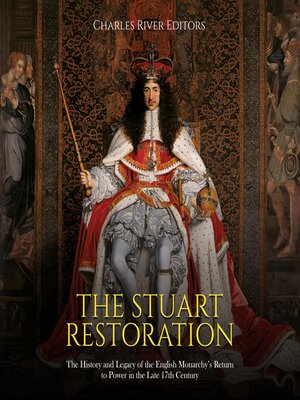The Stuart Restoration
audiobook (Unabridged) ∣ The History and Legacy of the English Monarchy's Return to Power in the Late 17th Century
By Charles River Editors

Sign up to save your library
With an OverDrive account, you can save your favorite libraries for at-a-glance information about availability. Find out more about OverDrive accounts.
Find this title in Libby, the library reading app by OverDrive.



Search for a digital library with this title
Title found at these libraries:
| Library Name | Distance |
|---|---|
| Loading... |
Oliver Cromwell is one of the most important men in England's history, but everything he struggled for collapsed within two decades of his death. The army, Parliament and the citizens of London grappled with each other for control of the country, and even the army no longer remained a united political force. Civil war almost broke out again as a force under Lambert failed to prevent General Monck, the military governor of Scotland, from marching south and dissolving the Rump Parliament. Excluded MPs were restored on condition that they themselves dissolve Parliament, and following fresh elections without military intervention, a new Parliament met on April 25, 1660. Dominated by Presbyterians and Royalists, it accepted a settlement offered by the man titling himself Charles II, the son and heir of Charles I. On May 25, 1660, Charles II returned to England, and less than two years after Cromwell's death, his work was undone by the Restoration. King Charles II heaped ignominy upon defeat by having Cromwell's body dug up and posthumously executed. Cromwell's body was then decapitated, as was Ireton's, and their heads were placed on a pike above Westminster Hall, where Charles I had been tried, for several years.
Despite the Restoration, however, and despite the fact England's republican experiment barely outlasted Cromwell, the Commonwealth and Restoration were hugely important in asserting the power of Parliament, and it permanently shifted England's political balance firmly towards a constitutional monarchy limited by Parliament. The Stuart monarchy was restored on condition of compromise with Parliament and the army, and a precedent had been set for Parliament to replace the monarch, a precedent it would follow in the 1680s when James II was replaced by William and Mary in a settlement that set even more limits around the monarch.







